Road Bike Party
Martyn Ashton shows off his amazing road bike stunt skills in this incredible video.
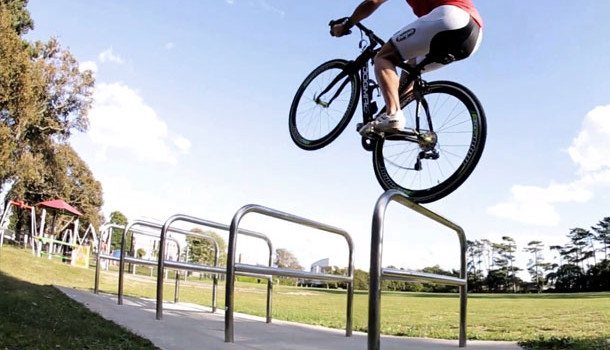
I Love Bicycling is a website that is geared towards cycling for beginners with road cycling tips, training articles, nutrition tips, weight loss, how to’s and bike repair articles.
by Lee Agur
Martyn Ashton shows off his amazing road bike stunt skills in this incredible video.

by Craig Richey
Buying presents for the cyclists on your holiday gift list can seem daunting, and it can feel like they have everything but here are a few gift ideas that are guaranteed to generate a smile and happy miles on the bike.
Gloves are a great gift. Yes they probably already have a pair or two or seven, but when it comes to gloves the more and different the better. Every cyclist wants their hands to be warm but doesn’t want to wear gloves that are warmer than they need to be. Bulky gloves don’t feel as good on the shifters and generally the warmer the bulkier. Having more different glove options allows a rider to match the glove to the weather conditions and even bring extras to change out if their initial estimate was incorrect. Plus gloves wear out pretty quick so having multiples of favorites is great. My personal coldish weather favorite is the Giro Blaze. Here is less than half my current glove selection.

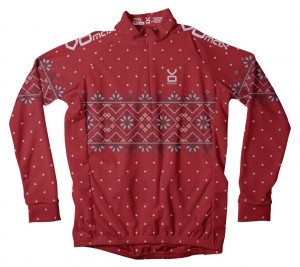
Like gloves, the more the better and similarly matching the correct baselayer warmth to the weather conditions is an art. The more options you have the easier it is. My favorite is the Craft ProZero Extreme. It is pretty warm but is hard to overheat in, as well as cycling this piece is great for skiing, running and general cold weather outdoor activities. Currently you can get a pretty good deal on the ProZero Extreme here.
If you want a little more festive gift a Christmas sweater themed thermal cycling jersey is an original and fun present. Plus it is made in the USA. Available on the VOmax website.
For the really good cyclist on your list the you can’t go wrong with a new Garmin Edge 510. Even if they have an older model Gamin they will be pumped on this upgrade.
Non-cycling gifts are great as well. Most cyclists have a closet full of spandex and a pretty limited quiver of nice clothes. A flannel long sleeve is a great present for a skinny cyclist so they can look good next time they leave the house without a bike.
About the Author:
Craig Richey is a multiple time Canadian National team member, wearing the maple leaf at mountain bike World Cups and cyclocross World Championships. Craig is currently doing an MBA in Boston and recently launched SponsorConnected.com
by Lee Agur
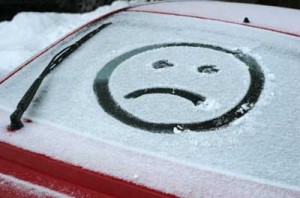 This training article comes courtesy of Rob Swan, a NCCP Level 3 certified coach with Critical Performance Endurance Sports.
This training article comes courtesy of Rob Swan, a NCCP Level 3 certified coach with Critical Performance Endurance Sports.
For many cyclists December marks the end to the cycling season. It also signals the start of the “Dreaded Winter Doldrums” – a time of seemingly perpetual darkness. We end up going to work in the dark and coming home in the dark; so the only time we see daylight is from a window or on the weekend. But how do we beat it and actually become stronger for next season? What can we do through December to maintain or improve upon last season’s fitness?
At this point I assume you have taken a rest and recovery period after your final race and training season. Amazingly, there are many options for us to choose from during the cold winter season.
Snow Shoeing: The sport of snow shoeing has really taken off in the last decade or so. Best of all, it’s a great cross training sport for any cyclist. Snow shoeing can be recreational, fitness building, or competitive. North America’s snow shoe racing scene is growing with independent races, race series and even national and North American Championship races each year. Some of the benefits of snow shoeing are:
Cross Country Skiing and Biathlon: It is no wonder that Nordic athletes have some of the highest VO2max readings on the planet. They are training and competing almost always at higher altitudes then most other sports for extended periods of time. Furthermore, the type of training they need to do requires a tremendous amount of energy and aerobic fitness and capacity. Cross country skiing consists of two styles: Classic (old) style, which has more cross-over benefit to running; and Skate skiing, which engages the larger cycling muscles. Whichever style you choose, the greatest benefit would be the ability to improve your aerobic capacity. Cross country skiing engages the entire body, so the oxygen demands are greater than most other sports. On a basic level this increase oxygen requirement contributes to an improved ability to absorb and transport oxygen to the muscles.
Biathlon is one of the oldest winter sports and is the most popular winter sport in Europe, on par with hockey in Canada. It also happens to be one of the most demanding sports. Biathlon features athletes skate skiing various distances followed by five rounds with a biathlon rifle. Needless to say combining cross country skiing and rifle marksmanship into one punishing sport makes biathlon an excellent winter sport for any athlete. There are many youth and masters programs all over the country.
Cyclocross: With its incredible variety of intensity, terrain, obstacles and weather conditions, cyclocross is not only the most spectator-friendly form of bike racing, it’s an awesome spectacle for any sports fan. Fans of the sport are treated to 30 – 60 minutes of constant, intense action-packed racing, with many opportunities to see their favorite racer from just one vantage point.
Cyclocross is a great way to stay in shape during the off-season, but road racers will benefit from better handling and confidence in adverse conditions and bumpy surfaces. Mountain bikers will enjoy more versatility and efficiency in handling extreme technical terrain and forced dismounts. Triathletes will also benefit from a way to maintain cycling and running fitness, and improve bike-handling skills.
Indoor Cycling: I am not going to get too in depth into indoor cycling as the subject has been covered often. What I will say is indoor cycling can benefit every level of cyclist. There just may be days when it’s not possible to get outside or you may just want to boost your fitness with focused and precise training. The greatest benefits to indoor training are time management, precise control of intensity levels and duration, and the social aspects of riding beside one of those “fast” athletes you never get to talk to on a group ride. Go find a Computrainer studio and race your friends up Mt. Ventoux of the Tour de France.
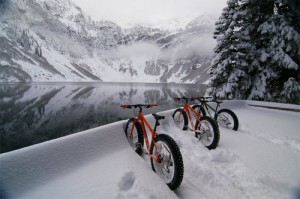 FAT Biking: Now if you truly want to stay outdoors through the winter months, test-ride a FAT Bike. Then, of course, you will be buying a FAT Bike because you will want to ride every day, winter or summer. These bikes can go anywhere, anytime and anyone can ride them. For winter, they are great as a commuter because they will roll over roads, dirt, snow and ice without a problem at all. You can take them on snow covered mountain bike trails and on snowmobile trails for the ultimate in winter fun. As well as sheer enjoyment, these bikes will help you maintain your fitness.
FAT Biking: Now if you truly want to stay outdoors through the winter months, test-ride a FAT Bike. Then, of course, you will be buying a FAT Bike because you will want to ride every day, winter or summer. These bikes can go anywhere, anytime and anyone can ride them. For winter, they are great as a commuter because they will roll over roads, dirt, snow and ice without a problem at all. You can take them on snow covered mountain bike trails and on snowmobile trails for the ultimate in winter fun. As well as sheer enjoyment, these bikes will help you maintain your fitness.
Rob Swan is Biathlon BC’s provincial head coach, as well as a NCCP Level 3 certified coach with CriticalPerformance Endurance Sports. Rob can be reached at: coachrob@criticalperformance.ca.
Sign up to race in the Grandfondo Axel Merckx Okanagan here after some winter cross training.
by Guest Post
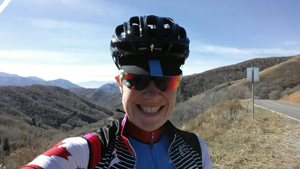 It’s that time of the year when the snow comes and goes but hasn’t decided to make it’s winter home just yet in the mountains I call home. Lately, that home has been Utah’s Wasatch Mountains. That time of the year when it’s a constant self-inflicted arm-wrestle to get the butt out the door and on the bike or in trail running shoes. I’m honored to share with the network of fellow cycling enthusiasts and soon to be riding companions on July 13th for the Granfondo Axel Merckx Okanagan what motivation is like in the mind of a former athlete like me. You see, people often comment about the level of commitment and resilience they see with Olympians. Oh, if they only knew the constant war waged in this thick skull of mine to simply keep the wheels turning. I have to admit, it was a little easier when I was training for an Olympics.
It’s that time of the year when the snow comes and goes but hasn’t decided to make it’s winter home just yet in the mountains I call home. Lately, that home has been Utah’s Wasatch Mountains. That time of the year when it’s a constant self-inflicted arm-wrestle to get the butt out the door and on the bike or in trail running shoes. I’m honored to share with the network of fellow cycling enthusiasts and soon to be riding companions on July 13th for the Granfondo Axel Merckx Okanagan what motivation is like in the mind of a former athlete like me. You see, people often comment about the level of commitment and resilience they see with Olympians. Oh, if they only knew the constant war waged in this thick skull of mine to simply keep the wheels turning. I have to admit, it was a little easier when I was training for an Olympics.
Winter or summer, on the blades or bike, there was a sense of responsibility to the ultimate goal of trying to win big races every four years. That, and the team of coaches, trainers, therapists, physiologists, psychologists, and teammates…all waiting to give you a hard time if you’re late, let alone absent. Not training was simply not an option. Now that I’m a recreational athlete, it’s a little different. I’m actually quite lazy at heart (Editor’s note: According to Clara’s Strava© profile, in the last month she has averaged 345 km on the bike per week. If only we could all be that lazy!).
I love sitting inside watching the snow fall with a coffee in hand. Why be frozen and miserable if you don’t have to? Well, because I like even more the feeling of getting out…rain, snow or shine. Exhausting myself on foot, bike, ski or snowshoe, and then sitting with that coffee in hand watching the snowfall is even better. The challenge is that first step out the door. My advice? Set yourself up for something so big – like a Granfondo or a cross-Canada trip on two wheels – and scare yourself with visions of suffering, slobbering and not feeling ready or motivated. It all serves as effective fuel for my motivational fire. The pay off is feeling great not just physically but mentally, as well. There is the satisfaction of the adventure when you do get outside that money cannot buy. Dreaming, not dreading, the summer of cycling ahead is where I’m at. I get creative with what I do. I cross train…a lot. I go with the flow of the forecast and environment I’m in when choosing the mode of exercise. Which brings me to our little get-together next July. I promised Axel and Jodi I’d come and take part in this fantastic event a few years back. The timing is finally right. Can’t wait for the ride!
Sign up to race with Clara Hughes in the Grandfondo Axel Merckx Okanagan here.
by Lee Agur
Martyn Ashton teams up with Chris Akrigg and Danny MacAskill to create another amazing road bike stunt video less than three months after suffering severe spinal injuries. If you like it share it.
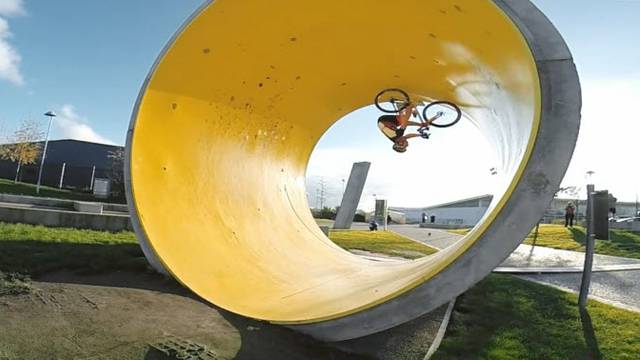
by Lee Agur
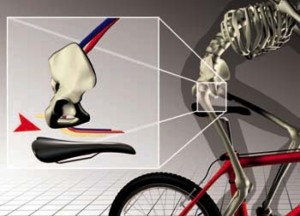 Does cycling cause impotence and erectile dysfunction? Before you freak out… studies have shown that cycling can decrease impotence as well as increase it depending on a few factors.
Does cycling cause impotence and erectile dysfunction? Before you freak out… studies have shown that cycling can decrease impotence as well as increase it depending on a few factors.
If you cycle for less than 3 hours a week it is likely that you are decreasing your chances of impotence much more than you are increasing it.
Anyone cycling over 3 hours a week should take as many steps as they possibly can (listed below) in order to decrease their risk.
Anyone sitting on their couch instead of cycling because they read this article and were afraid to continue biking. Smokers and obese people are also at a very high risk for erectile disfunction.
Studies (such as Massachusetts Male Aging Study) show that prolonged pressure on the perineum while cycling can increase the chances of impotence. The prolonged pressure on the perineum can damage nerves and blood vessels responsible for an erection and the damage could become permanent if the nerves and vessels are continually damaged without adequate recovery.
There are early warning signs for impotence caused by cycling. Almost all cyclists will have either numbness, pain or tingling before there is a serious case of erectile disfunction. If you are experiencing these symptoms it is time to take an active role in preventative measures. If you are not experiencing any of these symptoms then get back out there and keep cycling.
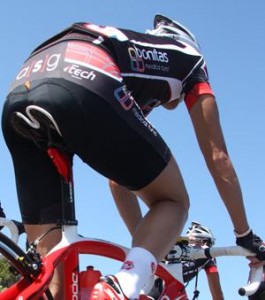 Moral of the Story
Moral of the StoryIf you don’t have any symptoms of numbness, pain or tingling then stop worrying about the impotence risks. If you are experiencing these symptoms follow the steps listed above. If you choose to stop cycling due to fear of impotence it is likely that you will increase your chances more than decrease them unless you are able to substitute cycling with another activity.
by Lee Agur
What is the real difference between carbon fiber vs aluminum vs steel vs titanium… What are the Pros and Cons of each material?
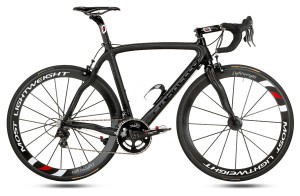 Most high-end bikes are made from this material and for good reason:
Most high-end bikes are made from this material and for good reason:
Many entry level bikes are made from aluminum because it can be made stiff and light enough for a great ride.
Steel will last a life time. It is also the easiest to repair, making it a great bike for touring.
Titanium is a metal that takes aspects from aluminum and steel… better shock absorption that aluminum but not quite as light.
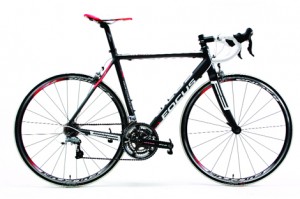 I have at least one bike made out of every material. I use carbon fiber bikes the most; but here are the exceptions:
I have at least one bike made out of every material. I use carbon fiber bikes the most; but here are the exceptions:
Winter riding – I use an aluminum frame as I do not want to ruin my more expensive carbon fiber frames, but still want a bike that climbs fast.
Downhill Mountain Bike – I like my titanium frame. I feel indestructible going downhill.
Touring – I would use a steel frame due to the ease of repairs and dependability.
I realize not everyone is fortunate enough to have such a wide selection of bikes and price point is always a factor. If you are just getting into cycling then most of the time a carbon fiber frame is not necessary. My first bike was aluminum and it was fantastic. I still have it… and I still ride it.
Each material has different qualities keep them in mind when you go to purchase your next ride.
by Guest Post
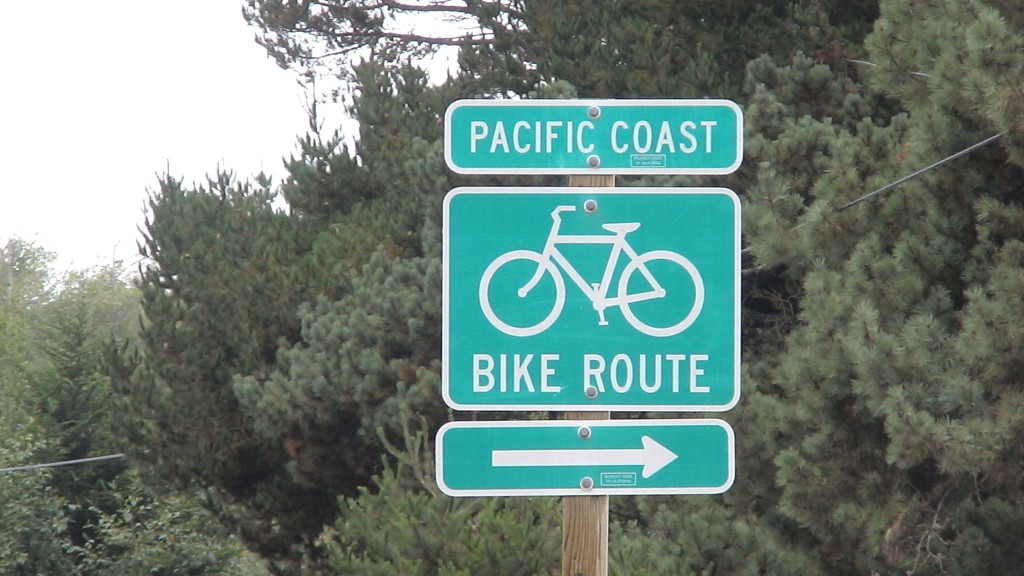
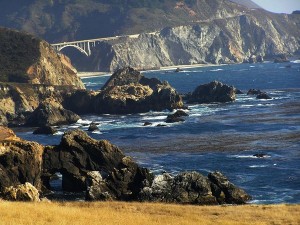 After 58 days of biking from Vancouver, Canada to Cabo San Lucas, Mexico, my sister and I are by no means experts at biking, nutrition or repairing our bikes. However, our journey opened our eyes to a new meaning of biking and traveling. More importantly, it gave us a glimpse of the U.S. and Mexico that those who R.V. their way down Baja or stay in an all inclusive resort simply do not get.
After 58 days of biking from Vancouver, Canada to Cabo San Lucas, Mexico, my sister and I are by no means experts at biking, nutrition or repairing our bikes. However, our journey opened our eyes to a new meaning of biking and traveling. More importantly, it gave us a glimpse of the U.S. and Mexico that those who R.V. their way down Baja or stay in an all inclusive resort simply do not get.
After several months of people back home telling us we shouldn’t or couldn’t do it, we left with both fear and excitement of the unknown. The U.S. Pacific Coast is one of the most bicycled routes in the world – but Mexico… not so much. There are several well written bicycle tour guide books most follow when biking from Canada to the Mexican border. Of all the cyclists we met on our journey, every person with a book had ‘Bicycling the Pacific Coast’ by Vicky Spring. Apparently this is ‘the book’. It had everything you could want from camping, grocery stores, showers and sights to see, right down to the mile marker. However, we didn’t bring any book and it turned out fine for us. There were enough cyclists we met along the way who were all happy to share any information.
I’m not going to go into too much detail of why one should have biking the West Coast on their bikeit list. The reasons are pretty self explanatory in terms of the natural beauty, safe biking route for almost the entire way, affordable and awesome hiker/biker campsites and the good weather (if you hit it right). We departed Vancouver on September 22nd, so the weather was a bit chillier than we would have liked. It actually rained every single day and night we were in Washington and into Oregon. The scariest part for us was crossing the 4 mile Astoria-Megler Bridge at the Oregon border during a small hurricane. The bridge had no shoulder, heavy traffic, and crazy side winds that would come in giant gusts and push us into the traffic. It was really, really scary. The hurricane lasted three days after we made it to Seaside, OR. We were lucky enough to stay in a very generous man’s home for 3 nights otherwise camping would have been miserable!
The weeks leading up to the Mexican border through California was nerve racking. The roads were very, very bike friendly and the traffic was pretty mellow. Road biking in Southern California is popular and there were cyclists all over the road in both directions. We looked a little out of place with our bikes all loaded up with gear. Most cyclists would slow down as they passed us to have a little chat before accelerating again. Every single conversation went something like this: “Where are you guys coming from and where are you headed?”
“We started in Vancouver and we’re headed to Cabo San Lucas,” one of us would say. The cyclist would reply with a very stern and disproving look, “I would not recommend doing that. I got my car stolen a couple years ago after spending a couple of days in Tijuana. You’re going to get your head chopped off!”
Then they would go on to say that the road was not possible to bike on because it is too narrow and bumpy and if you bike off the road you will plummet to your death. After a countless number of the same conversation, we got pretty nervous about what Mexico was really going to be like.
Of course, after all the hype about the dangers of Mexico, it turned out to be one of the best parts of the journey. We decided to boycott the Tijuana border and instead go 50 miles east to the Tecate crossing. The Tecate crossing is an alternate route for truckers who don’t want to deal with the hustle and bustle of Tijuana. We got across that border no problem and made the decision to take a bus 300 km out of the northern region to avoid any potential dangers. We started biking again in El Rosario. After 10 km into our ride we realized that we were going to be totally fine going through Baja. The road was almost entirely paved, with a few sections that were bumpy or under construction. The road is indeed narrow but there was so little traffic that it wasn’t a problem. Don’t get me wrong, we had to be very aware of traffic at all times, because if two R.V.’s or semi trucks were coming in both directions we needed to have time to get off our bikes and move off the road to give them room.
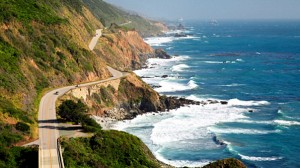 It is no secret that Mexico has developed a negative image for tourists over the past few years. After traveling three weeks down Baja on bicycles we have seen nothing but generous people. The people in rural Baja live simply, have little, and yet are some of the most friendly and helpful people we have met. Almost every single vehicle who passed us gave us plenty of room and a friendly wave, thumbs up, or words of encouragement. Even though we don’t speak the same language they still invited us into their homes and showed us the happiness simplicity can bring. It’s funny how 95% of people warned us about Baja and yet we experienced the opposite of their warnings. When you combine the language barrier, the remoteness of Baja, the extreme heat and traveling by bicycle, we were forced into situations we would otherwise never have experienced. Going out of our comfort zone ended up being the most memorable of the whole journey!
It is no secret that Mexico has developed a negative image for tourists over the past few years. After traveling three weeks down Baja on bicycles we have seen nothing but generous people. The people in rural Baja live simply, have little, and yet are some of the most friendly and helpful people we have met. Almost every single vehicle who passed us gave us plenty of room and a friendly wave, thumbs up, or words of encouragement. Even though we don’t speak the same language they still invited us into their homes and showed us the happiness simplicity can bring. It’s funny how 95% of people warned us about Baja and yet we experienced the opposite of their warnings. When you combine the language barrier, the remoteness of Baja, the extreme heat and traveling by bicycle, we were forced into situations we would otherwise never have experienced. Going out of our comfort zone ended up being the most memorable of the whole journey!
by Guest Post
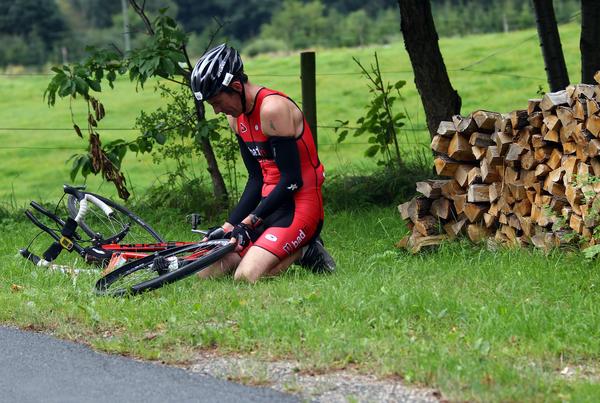
In the mid part of January 2013 my dad finally finished paying for my first Road Racing bike, I had trained most of the winter recovering from a broken collar bone very excited to have the possibility to road race the next season as I have wanted to race road bikes professionally since I was in the 6th grade. I finished out the spin class season feeling awesome about my abilities as a rider. I missed the first month of the season due to complications in getting to the races. Finally in early April, I was able to have the opportunity to go to a race called Vance Creek Road Race, I was told by my teammates that the course would be great to start on and it was relatively flat with one small climb.
I live in Ellensburg WA and most of the races in Washington are on the west side of the mountains, this one included, we drove for 3 hours to get to the race. Upon arrival to the parking lot I was nervous to race for the first time, but i was confident about my ability to ride my bike and the things I learned in my beginner to road racing class earlier in January. I got more and more nervous through my warm up but did my best to stay calm and focused (which was really hard for me since I already have a hard time concentrating on anything) and then I lined up after riding across a smooth gravel area between the start area and parking lot, once I was lined up my nerves eased up a little bit as they normally do when I race, the whistle blew and I calmly started to ride the bike disregarding the fact that it is safer to ride in the front, I decided to hang out in the back. There were only about 25 riders racing but some other juniors got on the front and put the pressure on pretty hard on the downhill section of the course. As I was holding on at the back of the race I remember thinking to myself, “Why are these guys working so hard we are on a flat farm road in the first half of the race?!”. I held on fairly comfortably until the few rolling hills that led up to the short climb to the finish line. I found myself passing half of the field just by using my momentum, when we hit the actual hill the race blew apart and there was one group I saw in front of the group I was in, both groups were about 10 riders. I was willing to work with these guys, so I did, but half way around the second time I decided to make some time by hopping off the front and making them chase but when I got back into the group I felt my tire go soft thinking ” this cant be happening” sure enough I muttered a few choice words and fell back with a very low tire which soon went flat. I walked a good mile then one of the follow cars for another race picked me up and took me back to the parking area.
A few weeks after this happened I got to go to the first Crit of the season, a 2 hour drive, I was very excited. We had one of our buddies with a broken collar bone and another with a torn shoulder going with the two of us that could ride, my shoulder still hadn’t gotten back to strength. Then about 15 min away from the race everyone heard a noise so we stopped the car and sure enough, me involving a bike race what could it be? It was in fact a flat tire on the car, so we had 3 injured people and one other man who was fully capable of changing a tire. We ended up unloading the car, changing the tire, and reloading the car in a super rush to get me there in time to have a chance to race, we drove as fast as we could and I got dressed in the car and we jumped out of the car and I signed a waiver and bam, time to roll out and not 3 min after I got rolled out it was time to start. So here I was cold and not warmed up and in the first lap I got dropped and chased the rest of the race to catch up and take 14th place.
The next race I went to was a beautiful day, I got there and I felt great about it. I did my turn on the front then at the top of a roller on the flat to rolling course I accidentally found myself off the front, upon being sucked back I hit a rock and once again found a flat tire, never could have thought that would happen to me, luckily there was a man just out riding the course and he gave me his wheel seeing that I was very angry because there was no neutral wheels like they told me. I thanked him and road my hardest the rest of the race. Later that day I got my wheel back fixed and the man took his wheel back, to ride the course backwards and watch my buddy Jordan sprint like a pro to the win of his race. They say bad luck comes in three’s, I guess they are correct, except my bad luck continued with other little problems. Moral of this story is, don’t trust your equipment or the tires that come with your bike, don’t worry about the weight you gain by getting flat protection because it may just save you a race.
by Lee Agur